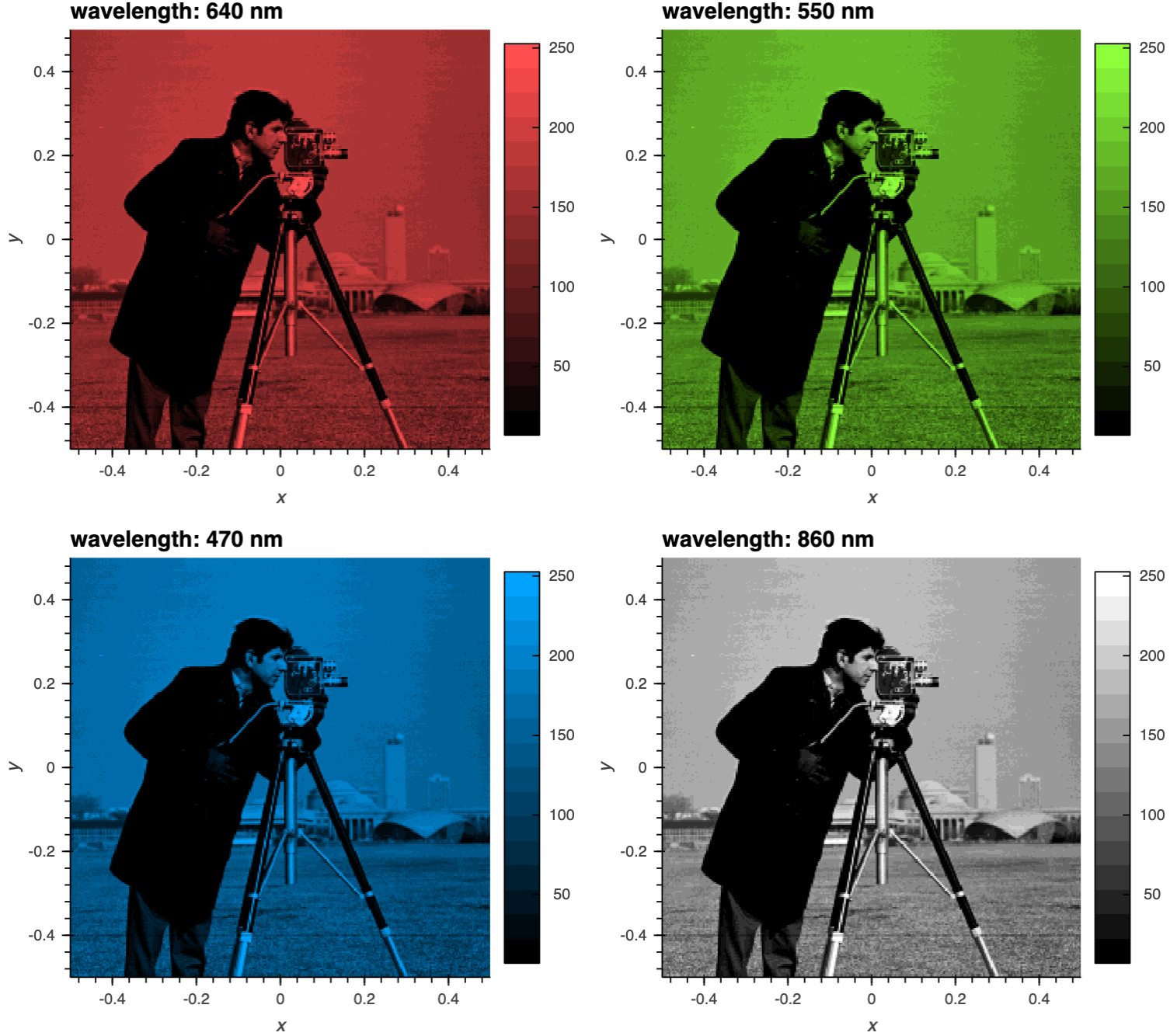Works great when applied to a single spectra. Using this for hyperspectral though... this Python implementation is too slow to be practical. (Can be magnitudes faster if coded in Julia)
Documentation site: https://yiweimao.github.io/coloured_spectra/
Blog post: https://yiweimao.github.io/blog/colour_of_spectra/
pip install coloured-spectra
Find the observed colour of a blackbody at 6500 K.
from coloured_spectra.coloured_spectra import *
import numpy as np
import pickle
import matplotlib.pyplot as plt
import cv2
bb = Blackbody(5778)
bb.plot()
def show_blackbody_colour(T_K):
bb = Blackbody(T_K,np.linspace(380,750))
sRGB = spectra2sRGB(bb.λ_nm,bb.B_λT)
# Due to normalisation choices, the brightness can change depending on the spectra
# show the colour at max brightness
HSV = cv2.cvtColor(np.reshape(sRGB,(1,1,3)), cv2.COLOR_RGB2HSV_FULL)
HSV[0,0,2] = 255
RGB = cv2.cvtColor(HSV, cv2.COLOR_HSV2RGB_FULL)
plot_colour(RGB)
This approximates the colour of the Sun with a blackbody temperature of 5778 K.
show_blackbody_colour(5778)
show_blackbody_colour(11000) # what about the star Rigel?
If you have a hyperspectral line, you can colour it in by the observed colour. For this, the invisible UV and NIR is painted white on top of a black background. This look up table spectrum is:
plot_hsv_LUT_spectrum()
lines_nm = [254,436,546,764,405,365,578,750,738,697,812,772,912,801,842,795,706,826,852,727] # approx sorted by emission strength
img = np.zeros((100,1000))
wavelengths = np.linspace(350,850,1000)
strength = 1.
for line in lines_nm:
indx = np.sum(wavelengths<line)
if indx > 0 and indx < 1000:
img[:,indx-2:indx+2] = strength
strength -= 0.05
plt.imshow(img,cmap="gray",extent=[np.min(wavelengths),np.max(wavelengths),0,np.shape(img)[0]])
plt.xlabel("wavelength (nm)")
You can see the emission lines have been coloured.
colour_hyperspectral_line(wavelengths,img)
You can also return a column of observed colour given a hyperspectral line. It's just very slow.
hyperspec_line2colour(wavelengths,img)
You may want to colour in a band of a multispectral or hyperspectral datacube according to the central wavelength.
